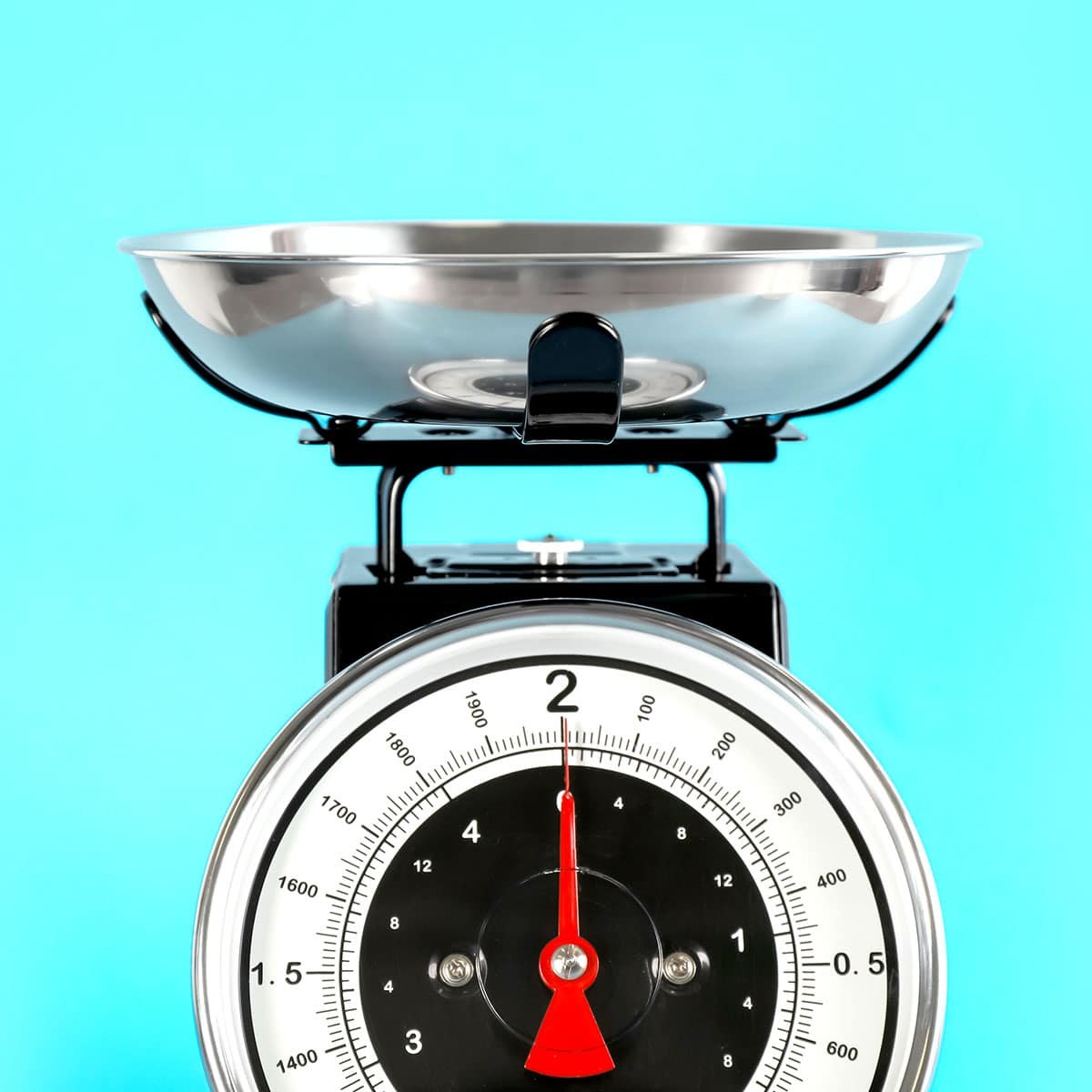Grams and milligrams are fundamental units within the metric system, a globally recognized system of measurement celebrated for its simplicity and ease of use. If you’ve ever found yourself wondering about the relationship between these two units, particularly asking “How Many Mg In A Gram?”, you’re in the right place. This article will break down everything you need to know about milligrams, grams, and their interrelation, ensuring you have a solid grasp of these essential measurements.
 Digital kitchen scale displaying weight, highlighting the importance of accurate gram and milligram measurements in cooking.
Digital kitchen scale displaying weight, highlighting the importance of accurate gram and milligram measurements in cooking.
The metric system operates on a base-10 system, making conversions straightforward and logical. When it comes to grams and milligrams:
- There are 1,000 milligrams (mg) in 1 gram (g).
- Conversely, one milligram is one-thousandth of a gram (1 mg = 0.001 g).
- For even smaller measurements, there are 1,000 micrograms (mcg) in 1 milligram, and therefore 1,000,000 micrograms in a single gram.
This neat, decimal-based structure contrasts sharply with older, more complex systems, making the metric system incredibly convenient for scientific, culinary, and everyday applications.
Decoding the Gram (g)
The gram’s story begins in post-revolutionary France. Amidst a societal overhaul, the French sought to standardize measurements, moving away from antiquated systems. In 1795, the gram (gramme in French) was officially adopted as part of the revised metric system. It was ingeniously defined as the absolute weight of a volume of pure water equal to a cube of one-hundredth of a meter on each side, or one cubic centimeter, at the temperature of melting ice. This definition linked weight to a physical constant, enhancing its reliability and universality.
The metric system, with the gram at its core for weight, quickly gained traction due to its logical structure. Today, the gram is a standard unit of mass around the world, used in almost every country except for the United States, Liberia, and Myanmar, though even in the U.S., grams are commonplace in science, engineering, and increasingly, in culinary recipes.
Delving into the Milligram (mg)
The milligram is a subunit of the gram, representing one-thousandth of a gram. The prefix “milli-” itself is derived from the Latin word for thousand, highlighting its relationship to the base unit. Understanding this prefix is key to grasping metric conversions; “milli” always denotes a thousandth part.
Milligrams are crucial when dealing with very small quantities where using grams would be impractical. In cooking, especially in baking or when using potent spices, milligrams offer the precision needed for balanced flavors. Nutritional information is also frequently presented in milligrams, particularly for micronutrients like vitamins and minerals. For instance, recommended daily intakes of calcium or Vitamin C are expressed in milligrams, as measuring these in larger units like ounces would be cumbersome and nonsensical. The pharmaceutical industry relies heavily on milligrams for precise dosages in medications, ensuring both efficacy and safety.
Exploring the Microgram (mcg)
Stepping down another level of magnitude, we encounter the microgram. A microgram is one-thousandth of a milligram and one-millionth of a gram. The prefix “micro-” originates from the Greek word “mikros,” meaning “small.” This prefix signifies one-millionth of a unit.
While you may not encounter micrograms frequently in everyday cooking, they are vital in specific contexts. Vitamins like B12 and K, and certain trace minerals are measured in micrograms due to the minute quantities needed by the body. In scientific research and advanced nutritional analysis, micrograms provide the necessary precision for measuring extremely small masses.
Quick Conversions: Grams, Milligrams, and Micrograms
To solidify your understanding, here’s a handy conversion table:
| Unit | Conversion | Equivalent Unit |
|---|---|---|
| 1 million micrograms | = | 1 gram |
| 1 thousand milligrams | = | 1 gram |
| 1 gram | = | 1,000 milligrams |
| 1 gram | = | 1,000,000 micrograms |
| 1 gram | = | 1/1000 of a kilogram |
| 100 grams | = | 1 hectogram |
| 1000 grams | = | 1 kilogram |
| 1,000,000 grams | = | 1 metric ton |
In summary, remembering that 1 gram is equal to 1000 milligrams is your key takeaway. Understanding these metric relationships empowers you in various aspects of life, from precise cooking to comprehending nutritional labels and beyond.
